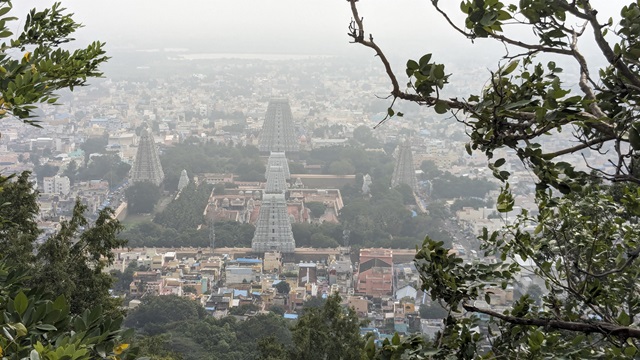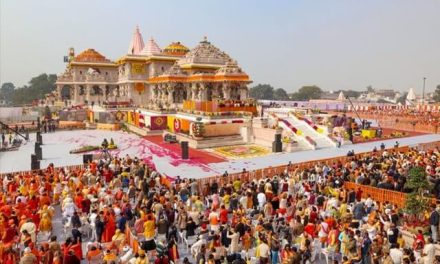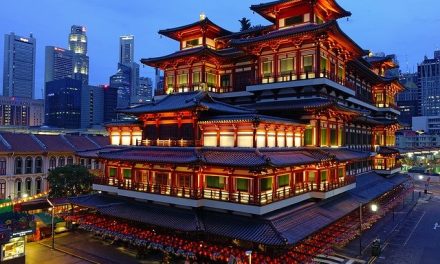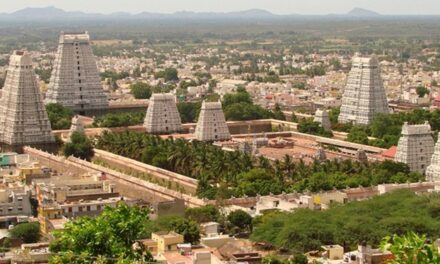India is known as the land of holy places and pilgrimage. Here we will talk about Arunachala Temple which is considered as one of the most important temples in South India. This temple is located in Arunachalam, Tiruvannamalai District, Tamil Nadu State, India. In this Arunachalam, there is the Arunachaleswara Temple, a Hindu temple dedicated to Lord Shiva. It also has another name Annamalaiyar Temple. Lord Shiva is worshiped here as Arunachaleswara or Annamalaiyar. The Linga representing Lord Shiva is known as Agni Linga. The history of Arunachalam temple here is very interesting. So while knowing the history of the temple, I will explain about the temple in a systematic way. It gives you a good feeling when you come to Arunachalam.
Arunachalam temple is open for tourists from 5:00 am to 12:30 pm and from 3:30 pm to 9:30 pm. Morning arati is performed at 6:00 am and evening arati at 9:00 pm. So, these times provide ample opportunities for devotees and visitors to experience the sacred rituals and immerse themselves in the divine atmosphere of the temple.
The temple complex covers an area of 10 hectares and is the largest in India. It has four gateway towers called gopurams. The tallest of these is the East Gopuram with a height of 217 feet. This Arunachalam temple has many shrines and important sightseeing spots. Let’s discuss all these in detail in this article.
The Wonders of Arunachaleswara Temple: Holy Places of Shiva
In this article, I will introduce you to the places we should explore in Arunachalam Temple. Also, I will explain it to you step by step. This map description will enhance your experience with immense pleasure.
- Raja Gopurram | Shakti Ganapati
- Stambhodbwa Kumara Swamy | Kambattu Iliyanar
- Siva Ganga Theertham
- 1000 Pillar Mandapam | Patala Lingam | Ramana Maharshi
- Big Nandhi | Siddhi Ganapati | Ashta Ganapati’s
- Gopura Subramanya Alayam
- Kalyana Sundereswara Temple
- Bhallala Gopuram
- Kalabhairav Temple
- Brahma Teerdham | Brahma Lingam | Aruna Giri Nathar Idol | Giri Pradakshina
- Idai Kattu Siddhar Samadhi | Ammani Ammana Gopuram | Rukku Samadhi
- Khili Gopuram | Mohini
- Vakula Vruksham | Nine Gopuram’s View Point
- Arunagiri Nathar Mandapam | Pada Mandapam
- Sthoola Sookshma
- Apita Kuchamba Sannidhi | Chitragupta
- Pancha Bootha Lingas | Pidari Amman Temple
- Tree opposite to Pidari Amman | Subramanya (Pichai Ilayanar)
- Arunachaleswara
- Arunachalam temple route map
1. Raja Gopurram | Shakti Ganapati
Let’s embark on our journey. The Raja Gopuram greets us first as we enter from the east side. The great Krishna Devaraya was responsible for building this magnificent structure, which stands 217 feet tall. Interestingly, it surpasses the height of the Gopuram of the Thanjavur Brihadeeswaralayam, which stands at 216 feet. The decision to erect the Raja Gopuram at a height of 217 feet was made to outshine its counterpart in Thanjavur, emphasizing the grandeur of the Arunachalam temple complex.
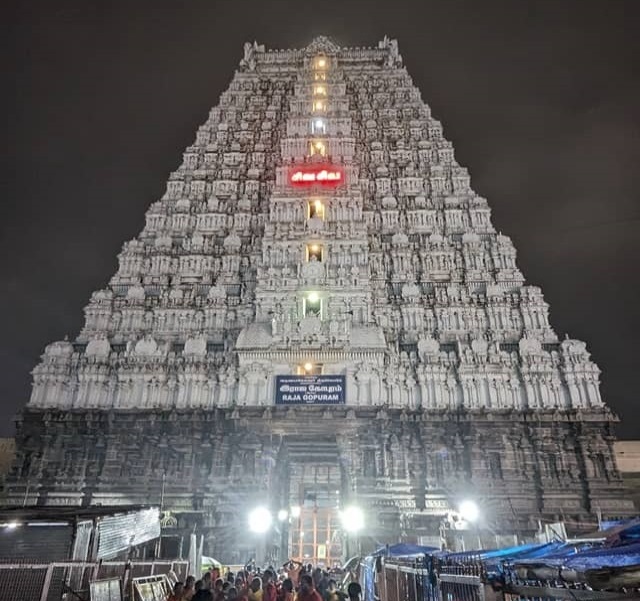
As you pass through the gopuram into the temple, you will see Shakti Ganapati on your left. Arunagiri Nadhar was standing next to him, holding a tambura. This temple has many important places related to Arunagiri Nadhar. Visit the Shakti Ganapati and Arunagiri Nathar and enter the temple.
2. Stambhodbwa Kumara Swamy | Kambattu Iliyanar
Next, the second destination for you to explore is the Kambatu Ilayanar Temple of Stambhodbhava Kumaraswamy, situated on your left. This unique temple is renowned for its belief that Kumaraswamy, the deity, emerges from a pillar within its premises. Legend has it that Arunagiri Nathar, a devoted worshipper, frequented this temple. In the court of Prauda Raya, another devout poet named Sambandar, dedicated to Goddess Kalika, also resided. However, Sambandar’s envy for Arunagiri Nathar grew as the latter’s fame soared.
To test Arunagiri Nathar’s devotion, Sambandar once challenged him to summon Kalika Devi and Kumaraswamy within the sacred precincts of Arunachalam temple. Despite Arunagiri’s attempts to dissuade Nathar, Sambandar remained adamant. In the end, Sambandar failed to invoke Kalika Devi, while Arunagiri Nathar successfully summoned Kumaraswamy through a kirtan.
During this extraordinary event, Kumaraswamy emerged from a pillar, casting a divine brilliance that caused Praudha Raya to lose his eyesight. Consequently, the temple earned the name Stambhodbhava Kumaraswamy Temple due to this miraculous occurrence.
Adjacent to this temple, you’ll discover a hall known as Valaikapu Mandapam. During the month of Ashada, a special ceremony called Kankanadharana is conducted for the goddess in this hall. Women believe that obtaining even a single bangle from the deity during this ceremony ensures the preservation of their marital happiness. Hence, if you happen to visit the Arunachalam temple during the month of Ashada, consider acquiring at least one bangle as a symbol of auspiciousness.
3. Siva Ganga Theertham
Sivaganga Theertham, adjacent to this temple, is the third place to explore. Sivaganga Theertham is also mentioned in ancient texts, but its water disappeared in later times. Going into the explanation…
There was a king and his wife, Queen, who wanted to view the sea from Tiruvannamalai. As it was impossible to see the sea from the town, the king had a large pond (tattakam) constructed for her. Rani is also known as Mangayarkarasi and Tirumalamba. Due to its size, it is known as Tirumalamba Devi Samudram. It is 4 km away from Arunachala Shiva Temple. This pond resembles an ocean. Its area is about 20 acres.
A pipeline has been set up to fill water from Tirumalamba Devi Sea to Sivaganga Theertham. Interestingly, during the restoration of the temple in 2002, a natural spring was discovered under the Sivaganga Theertham. The water we see in the tirtha originates from this spring.
4. 1000 Pillar Mandapam | Patala Lingam | Ramana Maharshi
The fourth place we have to explore is Shiva Ganga Theertham on the left, while this one is on the right. Krishnadevaraya was also responsible for building it. This spacious hall resembles a small village. Its architectural design and sculptures are remarkable.
You may wonder if these structures are a waste of resources. There is a reason to explain the greatness of the ruler. Sculptures on the walls add to the fun and children can learn about their culture and history from their elders. This Mandapam is such a magnificent building.
Inside this mandapam, there is a Siddha samadhi called Patala Lingam. This Siddha samadhi was there before Krishnadevaraya built this mandapam. To establish this mandapa at this place, Krishna Devaraya bought land by offering 500 gold coins. He could freely take the land because he was king, but he chose not to display his greatness. There is an inscription regarding this event.
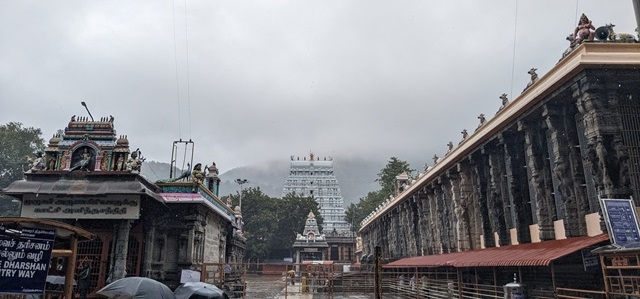
At that time, even Ramana Maharshi used to do penance in this area. This mandapam displays unique and wonderful paintings that shed light on the life of Ramana Maharishi. These photos are a must-see. Among them are the birthplace of Ramana Maharshi and the places he visited before reaching Arunachalam.
5. Big Nandhi | Siddhi Ganapati | Ashta Ganapati’s
Bhallala Maharaj enshrined and placed this Nandi inside the mandapam. During the Pradosha period in the month of Trayodashi, the Nandi in the Arunachalam temple is lit and worshipped. People flocked to the temple in large numbers to see them. This particular Nandi has a regal appearance with a playfully stretched tongue as if emerging from Kailash. It was truly a sight to behold during the days of Trayodashi.
Each prakaram (enclosed passage) has a Nandi and is the largest in the temple. Nandi sizes decrease from here towards the inner sanctum. Now, let’s move into the second prakaram known as the Bhallala Prakaram. Also behind the Kumaraswamy Temple is the Sarva Siddhi Ganapati Temple. Arunachalam temple has around 15 Ganapatis. Out of these Ashta Ganapatis, they are the most powerful and important. It is difficult to find a miniature Ganapati among them.
6. Gopura Subramanya Alayam
In front of Bhallala Maharaj Gopuram, you will notice Gopura Subrahmanya Temple on your right. Interestingly, this temple is situated on a raised platform. Arunagiri Nathar once visited prostitutes and got caught up in their habits. As his parents were absent, his older sister used to take care of him. She is a remarkable woman. He was addicted to prostitution and used to torture his sister for money. Frustrated and admitting she has no money to give, his sister offers herself to satisfy his lust.
These words affected Arunagiri Nathar so much that he realized how he had wasted his life. Suffocated by self-deprecation, Arunagiri Nathar Bhallala Maharaj wants to end his life by jumping from the top of the tower. Kumaraswamy intervenes, saves him, and writes bijaksharas (sacred letters) on his tongue. Once a devotee of Kumaraswamy, Arunagirinathar lost his way because of his mistakes.
Gopura Subrahmanya Temple is the place where Lord Subrahmanya saved Aruna Giri Nathar. That is why this temple is located next to the Gopura Prakaram, where Kumaraswamy had darshan. You can also see the Arunagiri Nathar idol in this temple.
7. Kalyana Sundereswara Temple
The temple to the left of Bhallala Gopuram is called Kalyana Sundareswar Temple, where weddings are held. Some couples separate after facing misunderstandings. But, in the case of couples who are facing misunderstandings and need a solution, performing worship in this temple can help resolve their issues.
8. Bhallala Gopuram
The next site to explore is Bhalla Gopuram. Bhallala Maharaj was a devoted follower of Lord Shiva and played an important role in building half the structures of this temple. Unfortunately, he has no children. He wanted a son and was worried about who would offer Taddinam after his death. Lord Shiva decided to test him and appeared before him in the guise of Shiva Yogi, along with his disciples. He claimed to have meditated for years without any physical desires and asked Bhallala Maharaj to arrange courtesans for his disciples.
This desire was so unusual that the king agreed and arranged for courtesans. In the end, Shivayogi expresses the desire of the courtesan. However, all the courtesans were already engaged, and the king was at a loss as to how to fulfill his guest’s request. In this dilemma, the king’s second wife offered to fulfill the request by favouring her husband. When she went to Shiva Yogi, he was meditating. On touching him, the yogi was transformed into a boy.
The queen was overjoyed and believed that Lord Shiva had become her son. She took the baby and presented it to the king, but as the king held the baby in joy, the baby disappeared. Heartbroken, both the king and the queen are deeply saddened. Then Shiva and Parvati appeared before the couple. Shiva declares the king and queen as his parents and reveals that he has come in the form of a baby to fulfill the king’s desire to hold his son.
As his son, he promised to perform annual sraddha rituals for the king. Shiva continued to fulfill this promise at a special place every year. Bhallala Maharaj constructed the Gopuram in this location, which is why it is known as Bhallala Gopuram. Passing through this gopuram, you enter the second prakaram.
9. Kalabhairav Temple
Here, on the left side, you’ll find the Kaala Bhairava temple. The idol of Kaala Bhairava here is truly captivating. It’s the finest Kaala Bhairava idol in all of India. With three eyes, fangs, an intense gaze, and eight arms, the idol exudes both fierceness and splendour. Tippu Sultan had caused significant damage to many temples in Arunachalam. But he could not harm the Arunachala Shiva temple. This was due to an incident involving Bhairava that disrupted Tippu Sultan’s life, an event not recorded in history. Due to that incident, Tippu Sultan fled from Arunachalam out of fear. This highlights the immense power of Bhairava. Thus, offer your namaskar to Bhairava here.
10. Brahma Teerdham | Brahma Lingam | Aruna Giri Nathar Idol | Giri Pradakshina
Moving on to the next location, you will find a mighty Brahma Theertha next to the Bhairava Temple. This sacred site is mentioned in the Puranas and is renowned for its immense power. If you have the opportunity to take a bath in this holy tirtha, it is highly recommended. However, if bathing is not permitted, you can simply sprinkle water on your head or offer your obeisance to it. The Giri Pradakshina, a circumambulation ritual, begins in front of the Brahma Lingam at Brahma Tirtha within the premises of the Arunachalam temple. If the temple happens to be closed when you commence the Giri Pradakshina at night, remember the Brahma Lingam and Tirtha from outside before you start the ritual.
Next, you’ll encounter the idol of Arunagiri Nathar depicted on the wall of the Brahma Theertham. Arunagiri Nathar is revered as the chief devotee of the Arunachalam temple. It is customary to pay your respects to Subrahmanya Swami, as he is believed to have descended multiple times for Arunagiri Nathar, showcasing his immense greatness. Legend has it that the spirit form of Arunagiri Nathar still wanders the temple premises, symbolizing his eternal connection with the divine.
11. Idai Kattu Siddhar Samadhi | Ammani Ammana Gopuram | Rukku Samadhi
When standing at the center of the temple, you’ll see the south entrance to your left, known as Tirumanajana Gopuram. On your right is the north entrance. If you go towards South Gopuram, you’ll find a goshala (cow shelter) there. The 13th site to explore is inside the Goshala. Entry might be restricted due to the cows’ potential discomfort in crowded settings. If so, offer your namaskar from outside.
You’ll notice a hole at the base of the floor on a wall. This location is the Sajeeva Samadhi site of a great soul, Idai Kattu Siddhar. Idai Kattu Siddhar was one of the 18 Siddhars in Tamil Nadu, a highly revered group of enlightened beings. Pay your respects to his Sajeeva Samadhi, even if you can’t enter.
Again, standing in the middle, you will see Ammani Amman Gopuram on your right. The tower is 171 feet tall and is named after the mother who funded its construction. As you pass this gopuram on the road, you will come across Rukku, an elephant tomb. Salute to this gopuram, too.
12. Khili Gopuram | Mohini
Moving to the next place is the Kili Gopuram, which is the third gopuram from the Raja Gopuram. Inside the Kili Gopuram, there is a statue of Mohini on the right. Our forefathers advised us to look at the Mohini idol while entering the temple and get our wishes fulfilled. One should not look at the idol of Mohini while going out. So, notice her presence when you enter. On the Kili Gopuram, you will find statues of parrots. After Praudha Rayu lost his sight, Arunagiri Nathar went to the Deva world to fetch a flower in the form of a parrot.
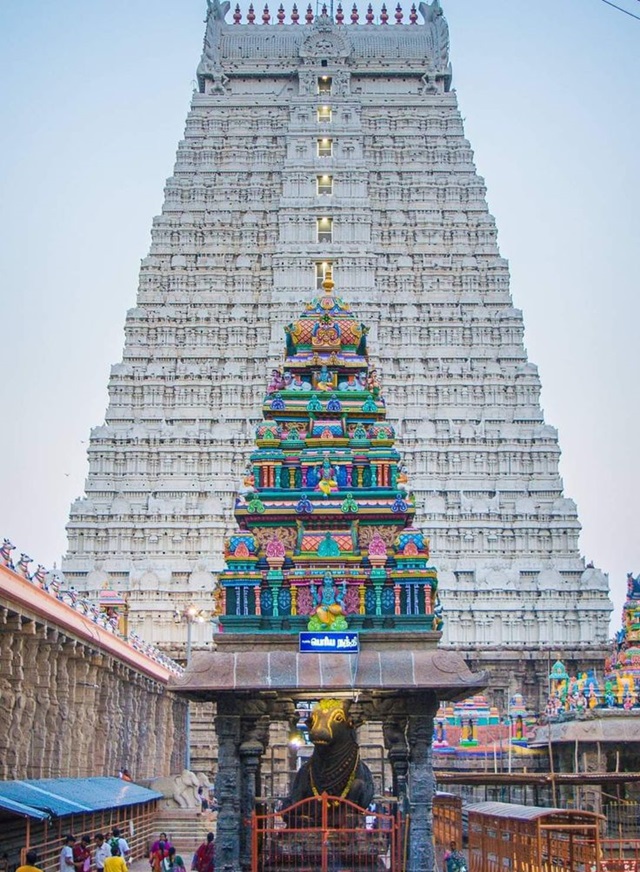
Before he can return with the flower, his enemy, Sambandar, burns his body. Following this, the spirit form of Arunagiri Nathar, in the form of a parrot, is believed to roam the temple, singing hymns in praise of Arunachala Shiva. Spiritual practitioners engaged in chanting at the Kumaraswamy temple can also see his astral form. The word “Kili” means parrot, hence the name Kili Gopuram.
13. Vakula Vruksham | Nine Gopuram’s View Point
Entering the temple after passing through Kili Gopuram, you’ll notice the next spot on the left side, the Vakula tree, also known as the Pogada tree. Under this tree, there’s a circle on the floor, which has worn off due to foot traffic. If possible, have it drawn again. This spot offers a unique view of all nine gopuras of the Arunachala Shiva temple. It’s the only such spot in the entire temple. It’s a remarkable feat of engineering, considering that these Gopuras were constructed at different times.
14. Arunagiri Nathar Mandapam | Pada Mandapam
Later, as you continue your pradakshina (walk) towards the back of the temple, you will see a mighty mandapam. This is Arunagiri Yogi Mandapam. In Arunachalam, Lord Shiva exists in three forms, the Shiva Lingam in the temple, the Arunagiri hill and the southern figure known as the Arunagiri Yogi.
Although physical entry is not possible in this mandapam, there is a stargate-like entrance to connect with Him astrologically. Currently, the Star Gate is closed and an idol representing Arunagiri Yogi is placed there. Pay your obeisances to this sacred and powerful mandapam. Going towards the west, you will see two gopurams, one smaller and one larger. The larger one is the Pay Gopuram.
There are three temples on the left near the small gopuram. The first temple is called Pada Mandapam. This temple houses the sacred feet of Lord Arunachala Shiva. Swami first appeared as Arunagiri Hill, known as Agni Linga. Later, the gods asked him to appear as Linga as well. So, as mentioned in ancient scriptures, Swami is present in this temple in Linga form. This is where Swami’s feet touch the ground. That is why this temple is called Pada Mandapam.
15. Sthoola Sookshma
Next to the pada mandapam temple, another must-visit site is called the Sthula Sukshma Temple. If you are unable to perform the circumambulation ritual around Giri, circumambulating this temple 11 times is believed to yield equivalent benefits. This temple holds a special significance. Within the inner sanctum of the main temple, Lord Shiva is enshrined in his gross form, while in this temple, he is present in a miniature form.
Despite its small size, this temple houses an idol of Lord Shiva. Remarkably, during abhishekam (ritual bathing) performed in the inner sanctum of the main temple, drops of water mysteriously appear on the idol within this temple. If possible, endeavour to witness this phenomenon during the Abhishek ceremony. From a spiritual perspective, these two forms are considered as one. The gross form in the main sanctum of the temple is believed to be identical to the subtle form present in this smaller temple.
From a scientific standpoint, the location of the Sthula Sukshma Temple is similar to the Panavattam area in the Arunachala Shiva Temple. Some speculate that there might be an underground water connection between these two areas. Nevertheless, this temple remains one of the most sacred places within the Arunachalam temple complex.
16. Apita Kuchamba Sannidhi | Chitragupta
The next spot we need to visit is the Apitha Kuchamba temple. Inside this temple, you’ll find a 3-foot-tall idol of the goddess with a very pleasing face. Offer your respects to her. Right in front of her, there’s the Ashtalakshmi Mandap, which has 16 pillars adorned with beautiful sculptures. The sculptures in this Ashtalakshmi Mandap are the most impressive in the entire Arunachala Shiva temple. So be sure to take a look at these sculptures too.
The next place to visit is Chitra Gupta Sannidhi. After you exit Ammavari Temple, you will see the Navagrahas (Nine Planetary Deities). Nearby, you will find Chitra Gupta Mandir on your right. Note that we should not confront him directly. That is why there is a small window-like structure through which you can see him. His gaze should not meet our eyes directly, so observe him through the side window.
17. Pancha Bootha Lingas | Pidari Amman Temple
After leaving Ammavari Temple, you will see Panch Bhoota Linga Temples. While Arunachala Shiva represents the element of fire (Agni Lingam), the other four lingas represent the elements of earth, air, water, and ether. These four Lingas are located at Kanchi, Kalahasti, Jambukeshwar, and Chidambaram. The sages established these four lingas for those who could not go to those places. By seeing these 4 lingas and then visiting the main fire linga, you will get the blessing of seeing all five lingas in one day.
Next, visit Pidari Amman Temple, which is the. She is the guardian deity of the Arunachal region. In the month of Kartika, a great ceremony is held in her honour when a jyoti (sacred flame) is lit. Inside her temple, you can also see idols of the seven Matrikas. There is also an idol of Goddess Renuka here. The temple has a mystical feel to it. Many Siddhas and spiritual seekers have reported seeing her come out of her temple at night.
18. Tree opposite to Pidari Amman | Subramanya (Pichai Ilayanar)
Going to the next place, you will see a tree directly opposite the temple. This tree is a combination of both the Bilva tree and the Aswatha tree, representing the relationship between Lord Shiva and Lord Kesava (Vishnu), as these are their favourite trees. According to what our elders have told us, there are siddhas on this tree in some form. Pay your respects and move on.
As you continue towards the main temple after the Pradakshin, you’ll come across the Pichai Ilayanar Kumaraswami temple. This deity is known as the giver of good health. There are six Kumaraswami temples located in and around the main temple. This Kumaraswami temple is one of them. He is a potent deity who bestows good health on devotees. If any of you are facing health issues, spending some time in this temple and performing Japa (recitation) for Kumaraswami can be beneficial.
19. Finally, Arunachaleswara
Lastly, the most significant place to see is the Arunachala Shiva Lingam in the inner sanctum of the Arunachalam temple. Around the main temple, you’ll notice sculptures of Dakshina Murthy, Lingodbhava Murthy, and Durga Devi on the outer walls of the inner sanctum. This arrangement is common in many temples within the Arunachala area.
There are three significant stories from the Puranas associated with Arunachalam. One is about Dakshina Murthy’s presence. The second story is the Lingodbhava incident, where Vishnu and Brahma attempted to discover the origin and end of the Lingam. The third tale involves the Mother Goddess slaying the demon Mahishaasur.
Because these three stories from the Puranas took place here, you’ll find these three deities in most of the temples. So, offer your respects to them. Additionally, there are elevated platforms with depictions of 63 Nayanars. Particularly, the images of Sundarar, Gnana Sambhandar, and Appar are quite remarkable, so be sure to see them too. While circumambulating around the temple, you’ll come across three important idols. At the southwest corner, there’s the Somaskanda Murthy idol.
This idol is used in processions during festivals. It holds great power and depicts Lord Shiva, the Goddess, and Kumaraswamy. If you move a bit towards the northeast, you’ll find the Swarnakarshana Bhairava temple. He is the deity who alleviates poverty. The third idol is the large Nataraja (dancing form of Shiva) idol, found in a very enigmatic spot.
Arunachaleswara | Annamalaiyar | Tiruvannamalai
After viewing these idols, the lovely and friendly Arunachala Shivaling will welcome you as you enter the main temple. No matter how long you gaze upon him, the desire to keep looking doesn’t fade. Especially, the Shivling and Panavattam are combined with a gold wire. It remains hidden because a cloth is covering it.
However, you can witness it during the abhishek process. If you manage to enter the Antaralayam, you won’t be able to remain inside for more than a couple of minutes due to the extreme heat. It can be suffocating, leading you to want to exit quickly.
This is due to the presence of the Agni Lingam. Each of the Pancha Bhuta Lingas has its own unique significance. After having the Darshan of Arunachala Shiva, if you stand in the Antaralayam, you’ll find the Shayana Murthy form of Lord Shiva.
On the northern side of Lord Shiva’s temple, there’s an entrance that leads to the goddess’s temple. Right next to that entrance, there’s a Shayana Mandir, also known as the Shobhana Gruha. This is where they place the Shayana forms of both Lord Shiva and the Goddess.
Idukku Pillaiyar

If you cross the Kubera Linga after completing Giri Pradakshina in Arunachala Temple, it means you have completed 80% of Giri Pradakshina in Arunachala Temple. Try visiting the Idukku Pillaiyar Temple past the Kubera Linga at the Arunachala Temple; Surprisingly, your fatigue will disappear without any trace. Don’t hear it, experience it! One feels truly enlightened at the Arunachala temple after passing through its narrow entrance. What is the reason behind this phenomenon? Visit Idukku Pillaiyar in Arunachala Temple.
ARUNACHALAM TEMPLE ROUTE MAP
To reach Arunachalam, one can follow the commonly traveled route map to Tamil Nadu, India. Arunachalam is located in the Tiruvannamalai district. The Tiruvannamalai to Arunachalam temple distance is very short. As the temple is in the town, there is very little distance between them. Visitors can easily reach the temple within the town itself. This temple is famous for its famous temple dedicated to Lord Shiva. So, visitors often reach the town via road or rail networks. Travelers to this holy destination can find complete details in this article on how to reach Tiruvannamalai.
Conclusion:
Finally, Arunachalam Temple stands as a testament to spiritual devotion and architectural marvels. With a rich history dating back centuries, it continues to attract pilgrims and tourists. Particularly in this article, we have provided a route map and a comprehensive description of the temple. This allows visitors to experience not only the physical beauty of the temple but also the deep spiritual essence it embodies. Whether one seeks solace, enlightenment, or appreciation for ancient wonders, Arunachalam Temple offers an unforgettable experience that resonates long after the journey is over. For more articles like this, visit the Journey Index.

